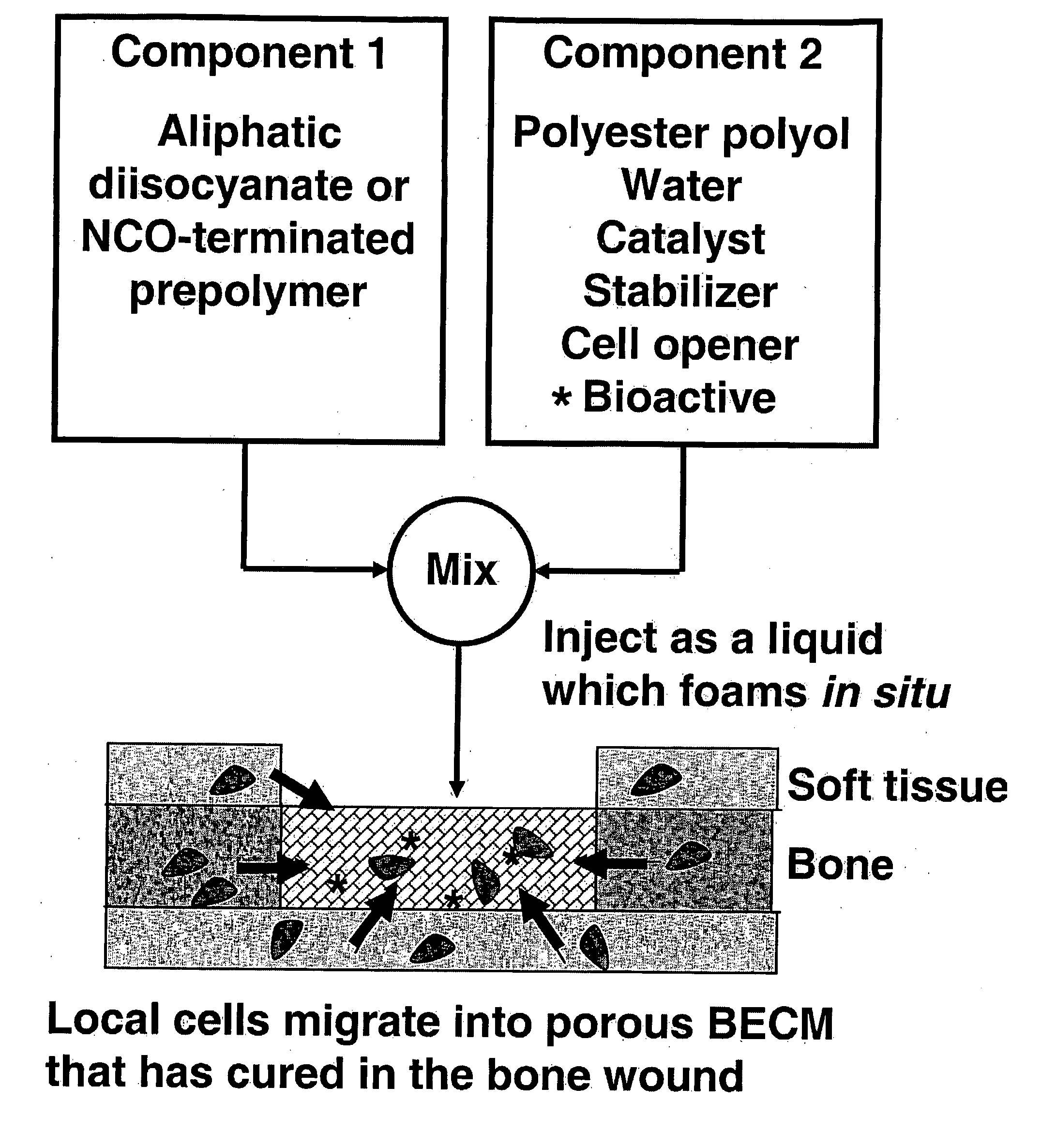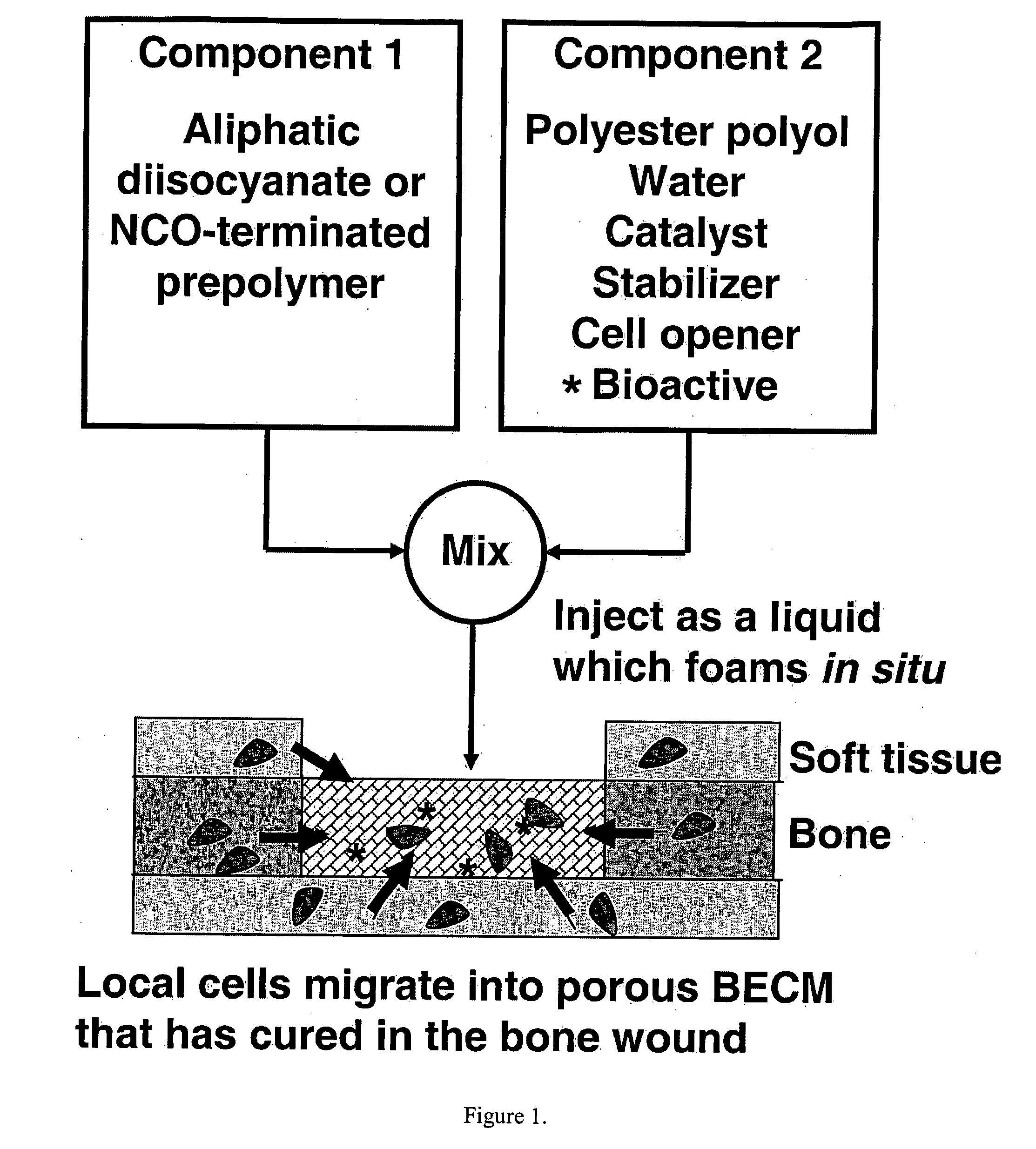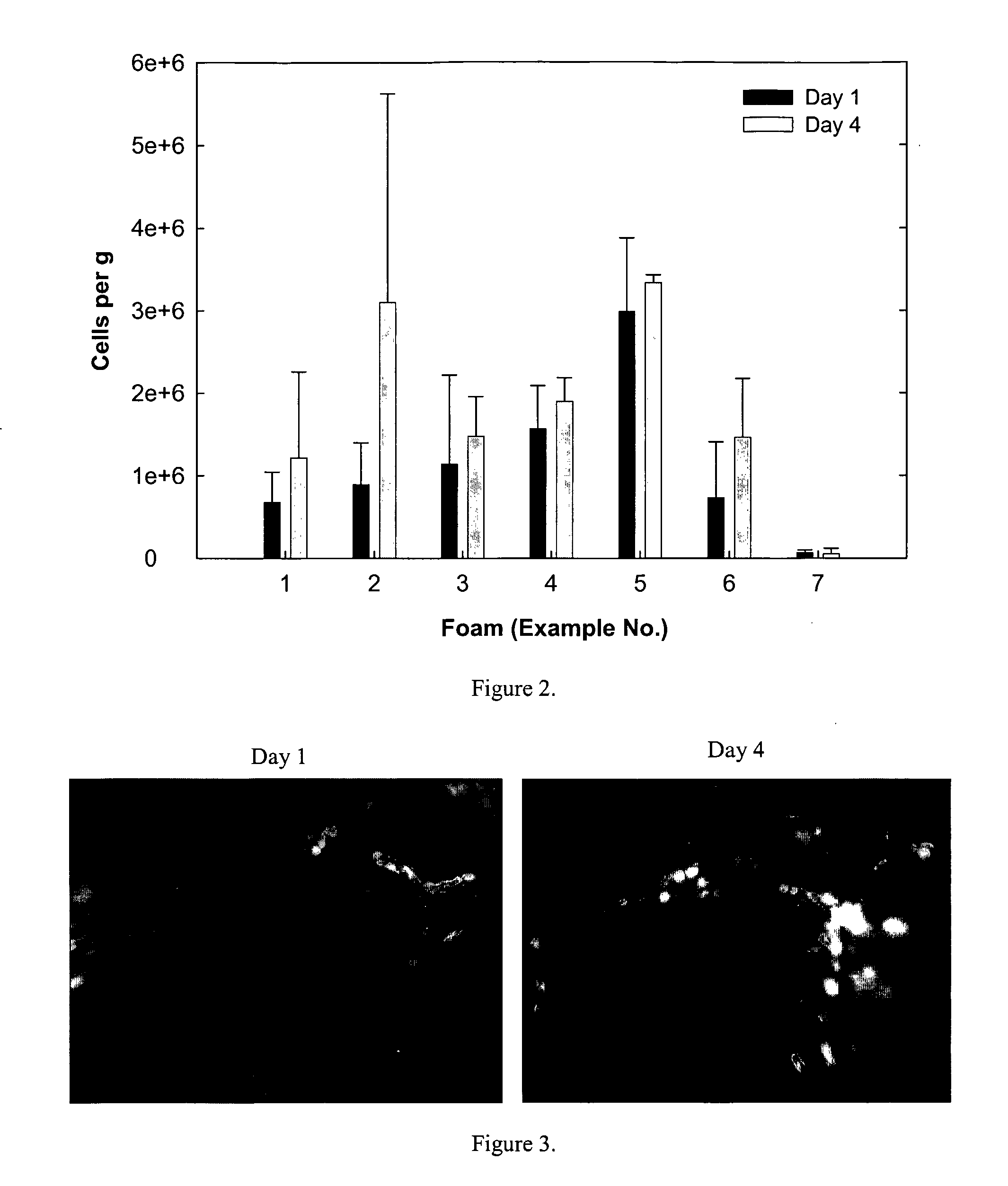Degradable Polyurethane Foams
- Summary
- Abstract
- Description
- Claims
- Application Information
AI Technical Summary
Benefits of technology
Problems solved by technology
Method used
Image
Examples
examples 15-16
[0064] Materials. Lysine triisocyanate (LTI) was purchased from Kyowa Hakko USA (New York). Turkey red oil, calcium stearate, stannous octoate, glycerol, and ε-caprolactone were purchased from Aldrich (St. Louis, Mo.). Glycolide was purchased from Polysciences (Warrington, Pa.). TEGOAMIN33 was received from Goldschmidt (Hopewell, Va.). Glycerol was dried at 10 mm Hg for 3 hours at 80° C. prior to use. ε-caprolactone was dried over anhydrous magnesium sulfate prior to use. All other materials were used as received. Two-component polyurethane foams were mixed using a Hauschild SpeedMixer™ DAC 150 FVZ-K (FlackTek Inc., Landrum, S.C.).
[0065] Polyester polyol synthesis. Polyester triols (P7C3G900 and P7C3G1800) were synthesized from a glycerol starter and a 70 / 30 mixture (w / w) of ε-caprolactone / glycolide monomers using previously published techniques as described above. Briefly, the appropriate amounts of dried glycerol, dried ε-caprolactone, glycolide, and stannous octoate (0.1 wt-%) w...
PUM
| Property | Measurement | Unit |
|---|---|---|
| Fraction | aaaaa | aaaaa |
| Porosity | aaaaa | aaaaa |
| Porosity | aaaaa | aaaaa |
Abstract
Description
Claims
Application Information
 Login to View More
Login to View More - R&D
- Intellectual Property
- Life Sciences
- Materials
- Tech Scout
- Unparalleled Data Quality
- Higher Quality Content
- 60% Fewer Hallucinations
Browse by: Latest US Patents, China's latest patents, Technical Efficacy Thesaurus, Application Domain, Technology Topic, Popular Technical Reports.
© 2025 PatSnap. All rights reserved.Legal|Privacy policy|Modern Slavery Act Transparency Statement|Sitemap|About US| Contact US: help@patsnap.com



